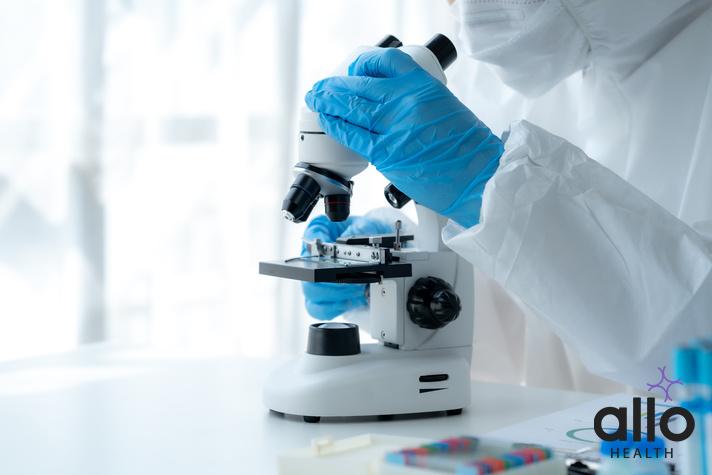How Is Pubic Lice (Crabs) Diagnosed?

Allo Health is dedicated to personalized well-being, offering support and trusted information tailored to individual health goals. The platform emphasizes human-generated content, led by a distinguished medical team of experts, including physicians and sexual health specialists. Their commitment to credibility involves rigorous fact-checking, authoritative research, and continuous updates to ensure accurate, up-to-date information. Allo Health's unique approach goes beyond conventional platforms, providing expert-led insights and a continuous commitment to excellence, with user feedback playing a crucial role in shaping the platform's authoritative voice.

Dr Thanushree, has her MBBS from Kanachur Institute of Medical Sciences, Mangalore
Why This Was Upated?
Our experts continually monitor the health and wellness space, and we update our articles when new information became available.
Updated on 20 June, 2025
- Article was updated as part of our commitment to diversity, equity, and inclusion.
Diagnosing pubic lice, commonly known as “crabs,” involves a combination of visual inspection and, in some cases, laboratory tests. While pubic lice infestations are typically straightforward to diagnose, healthcare providers may use various methods to confirm the presence of these tiny parasites. In this article, we’ll explore how pubic lice are diagnosed and what you can expect during the diagnostic process.
Visual Inspection
The primary method for diagnosing pubic lice is a visual inspection of the affected area. During a physical examination, a healthcare provider will closely examine the pubic hair and genital region for signs of lice or their eggs (nits). Using a magnifying glass or a special light called a Wood’s lamp, they can identify adult lice, nymphs (young lice), or nits attached to the hair shaft near the skin.

Differential Diagnosis
In some cases, the symptoms of pubic lice infestation, such as intense itching or skin irritation, may resemble other conditions, such as allergic reactions, dermatitis, or sexually transmitted infections (STIs). To rule out other possible causes, healthcare providers may perform a differential diagnosis, which involves considering various factors, including medical history, sexual activity, and recent travel.
Laboratory Tests
While visual inspection is often sufficient to diagnose pubic lice, healthcare providers may recommend laboratory tests in certain situations. These tests may include:
- Microscopic Examination: If the presence of pubic lice is uncertain or if there are concerns about other conditions, healthcare providers may use a microscope to examine samples of pubic hair or skin scrapings. This allows them to confirm the presence of lice, nymphs, or nits.
- PCR Testing: Polymerase chain reaction (PCR) testing may be used to detect the genetic material of pubic lice in samples collected from the affected area. PCR testing is highly sensitive and can provide accurate results, particularly in cases where lice or nits are difficult to visualize.

Self-Diagnosis
While healthcare providers are trained to diagnose pubic lice accurately, some individuals may attempt to self-diagnose using over-the-counter lice treatment products. While self-examination may help identify visible lice or nits, it’s essential to consult a healthcare provider for confirmation and appropriate treatment.
Diagnosing pubic lice involves a combination of visual inspection, differential diagnosis, and, in some cases, laboratory tests. Healthcare providers carefully examine the affected area for signs of lice or nits and may recommend additional tests to confirm the diagnosis. If you suspect you have pubic lice or experience symptoms such as itching or irritation in the genital area, it’s essential to seek medical attention for diagnosis and treatment. Remember, early detection and prompt treatment are crucial for managing pubic lice infestations effectively and preventing complications.
"The following blog article provides general information and insights on various topics. However, it is important to note that the information presented is not intended as professional advice in any specific field or area. The content of this blog is for general educational and informational purposes only.
Book consultation
The content should not be interpreted as endorsement, recommendation, or guarantee of any product, service, or information mentioned. Readers are solely responsible for the decisions and actions they take based on the information provided in this blog. It is essential to exercise individual judgment, critical thinking, and personal responsibility when applying or implementing any information or suggestions discussed in the blog."


